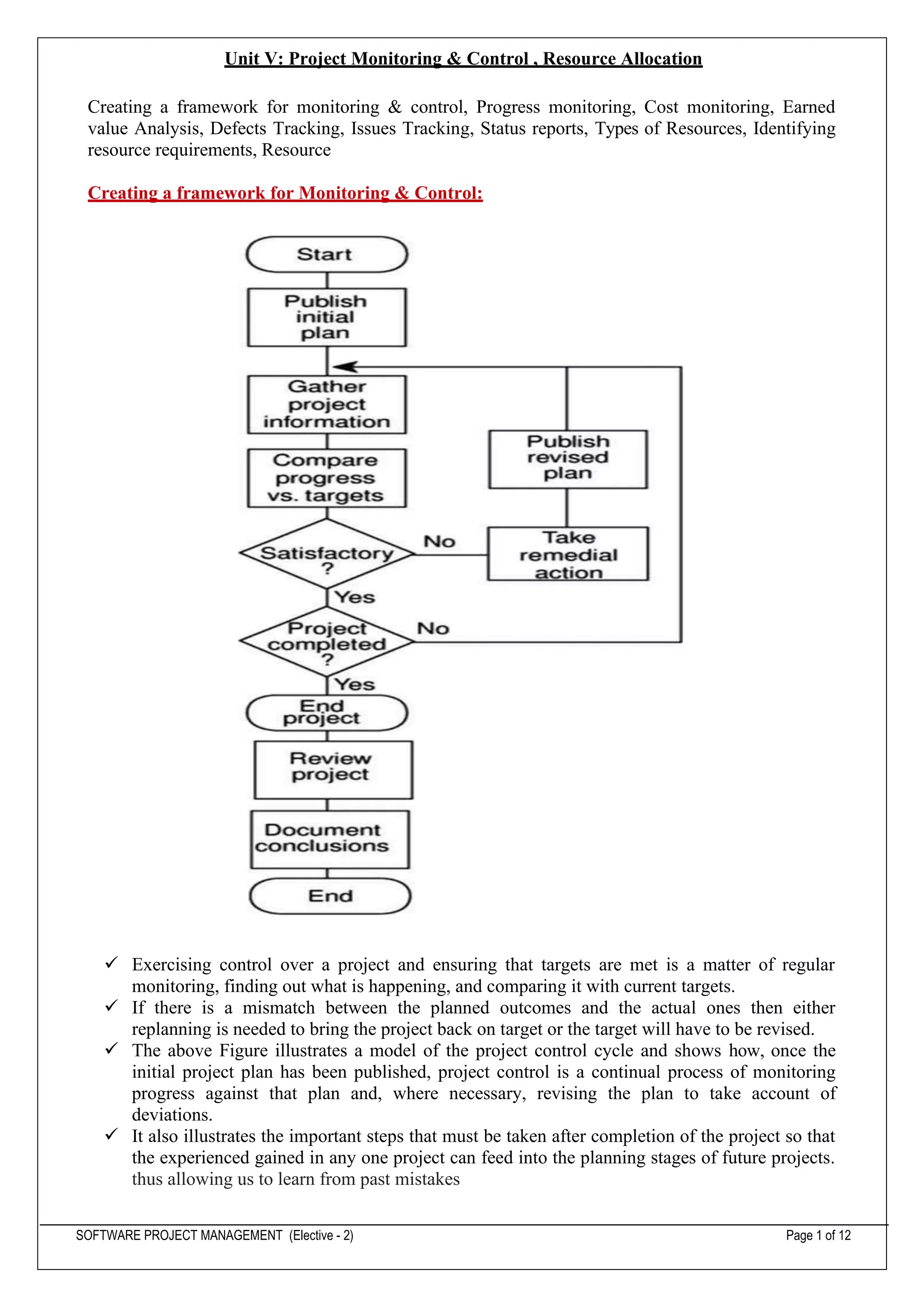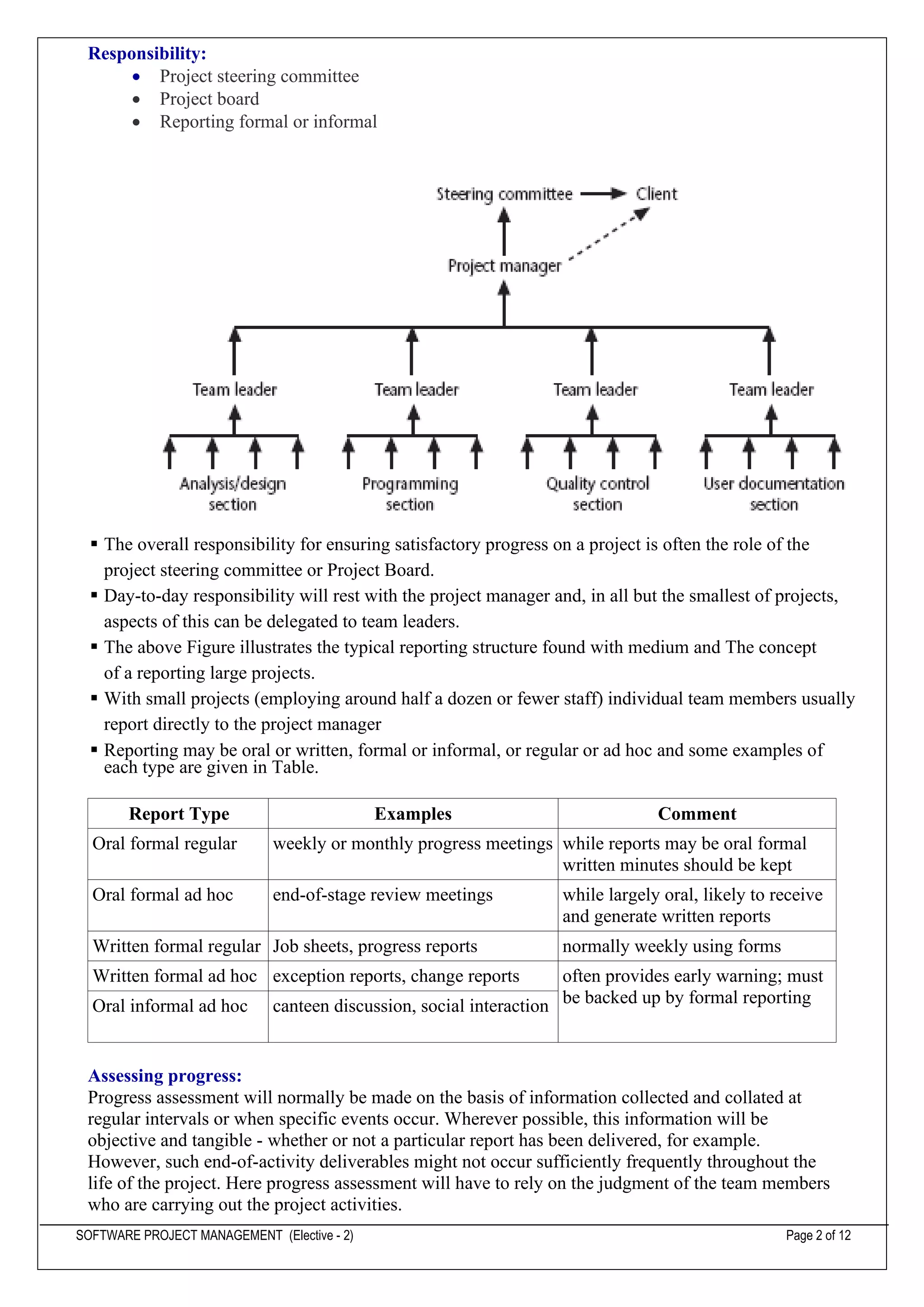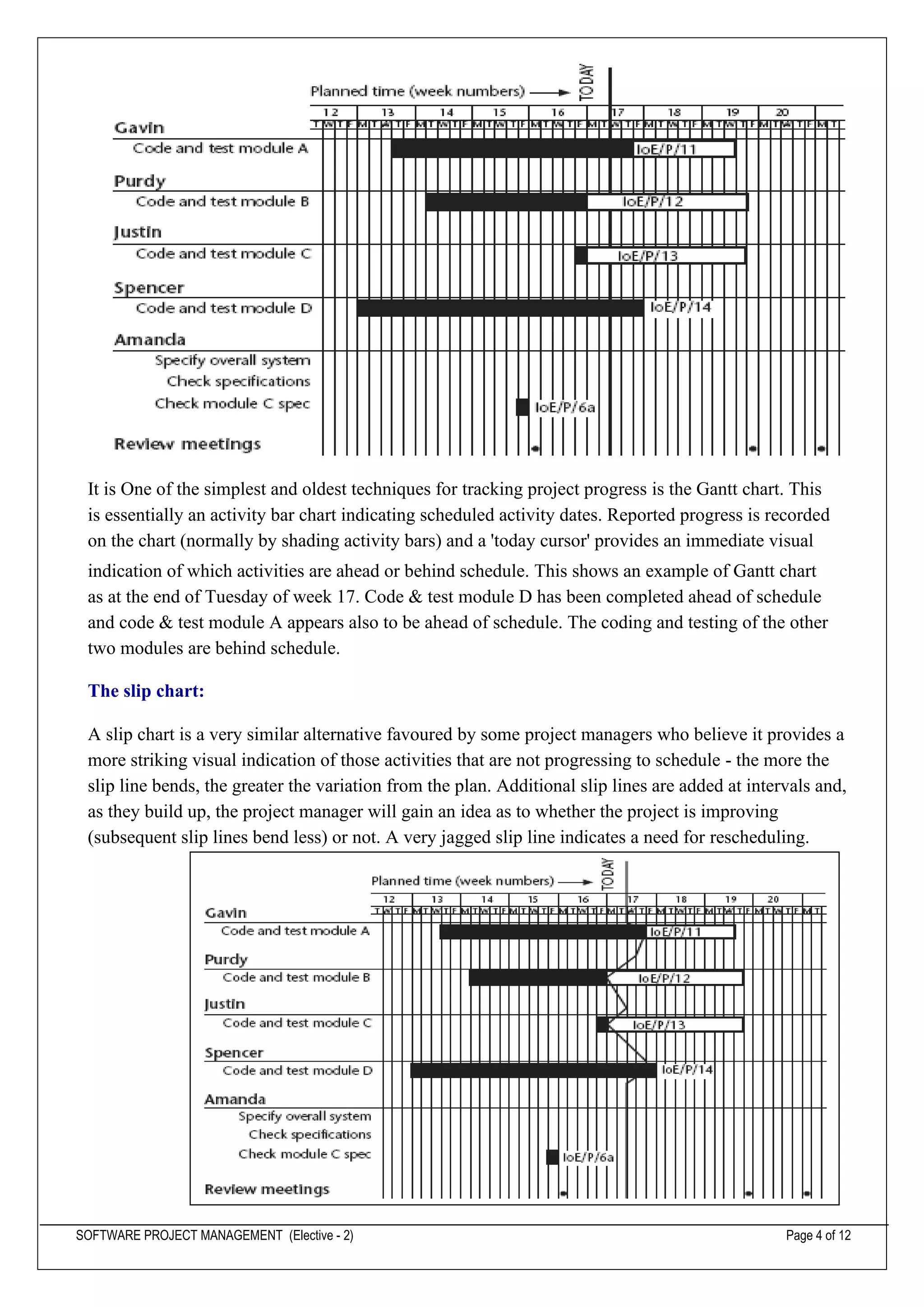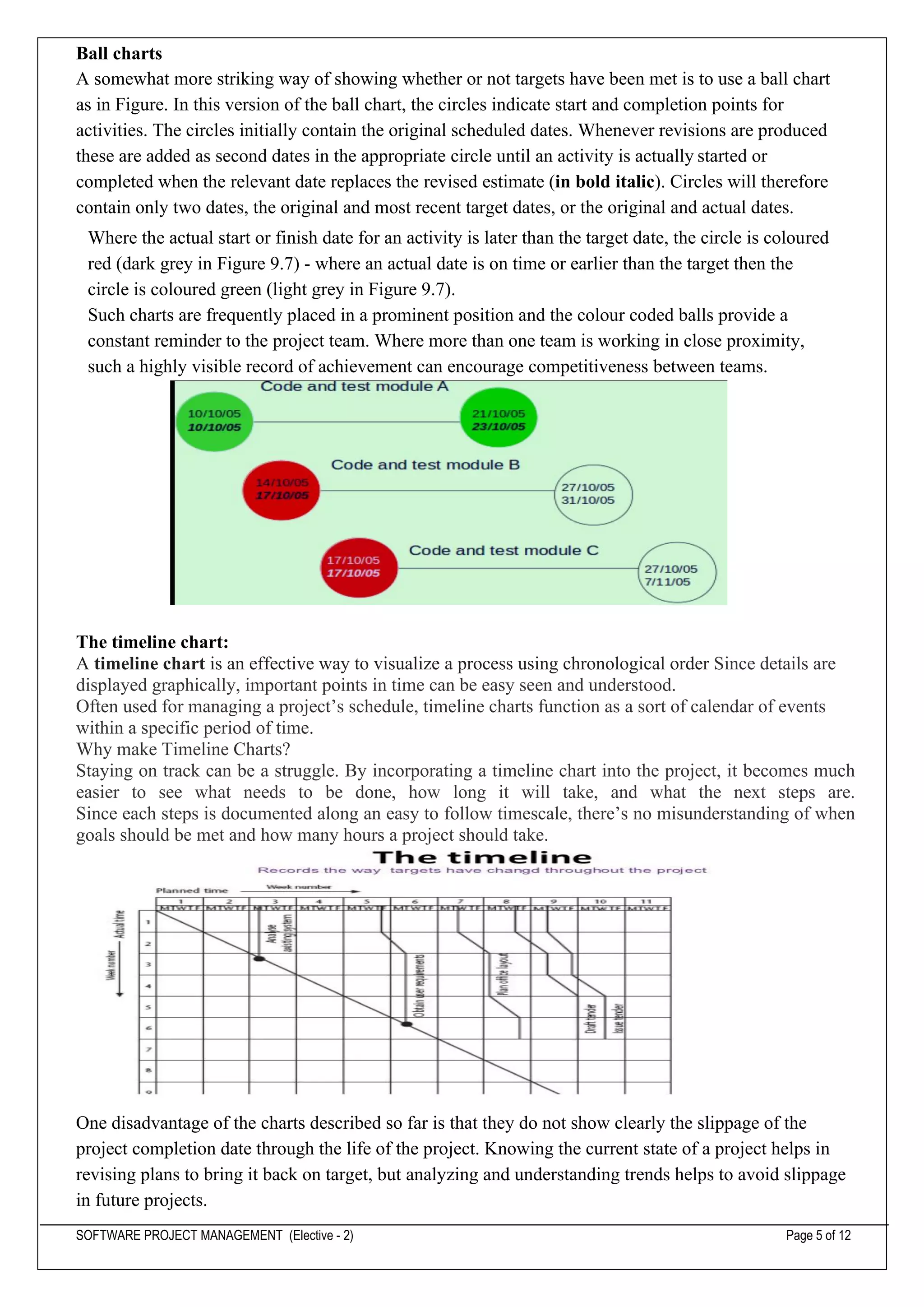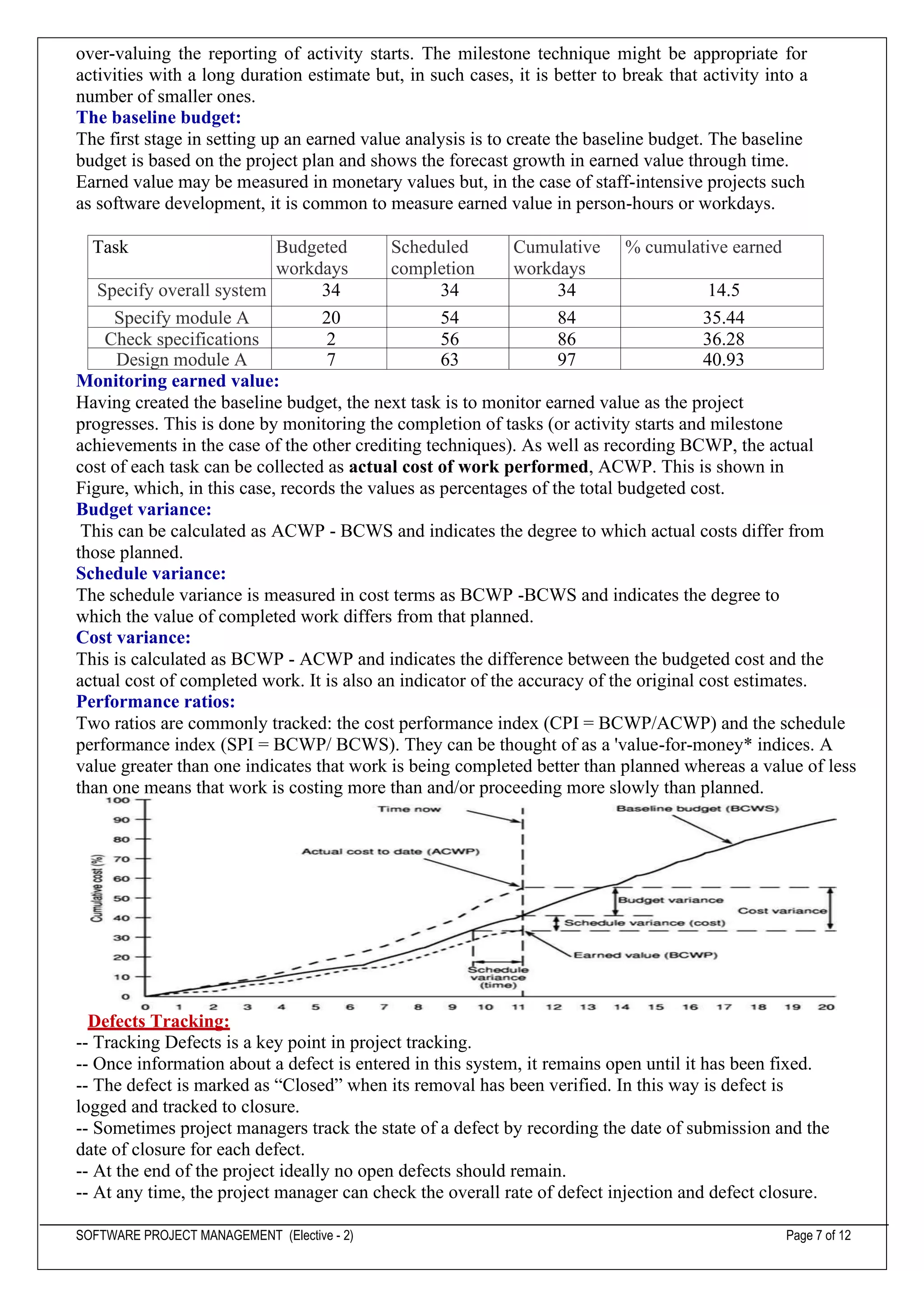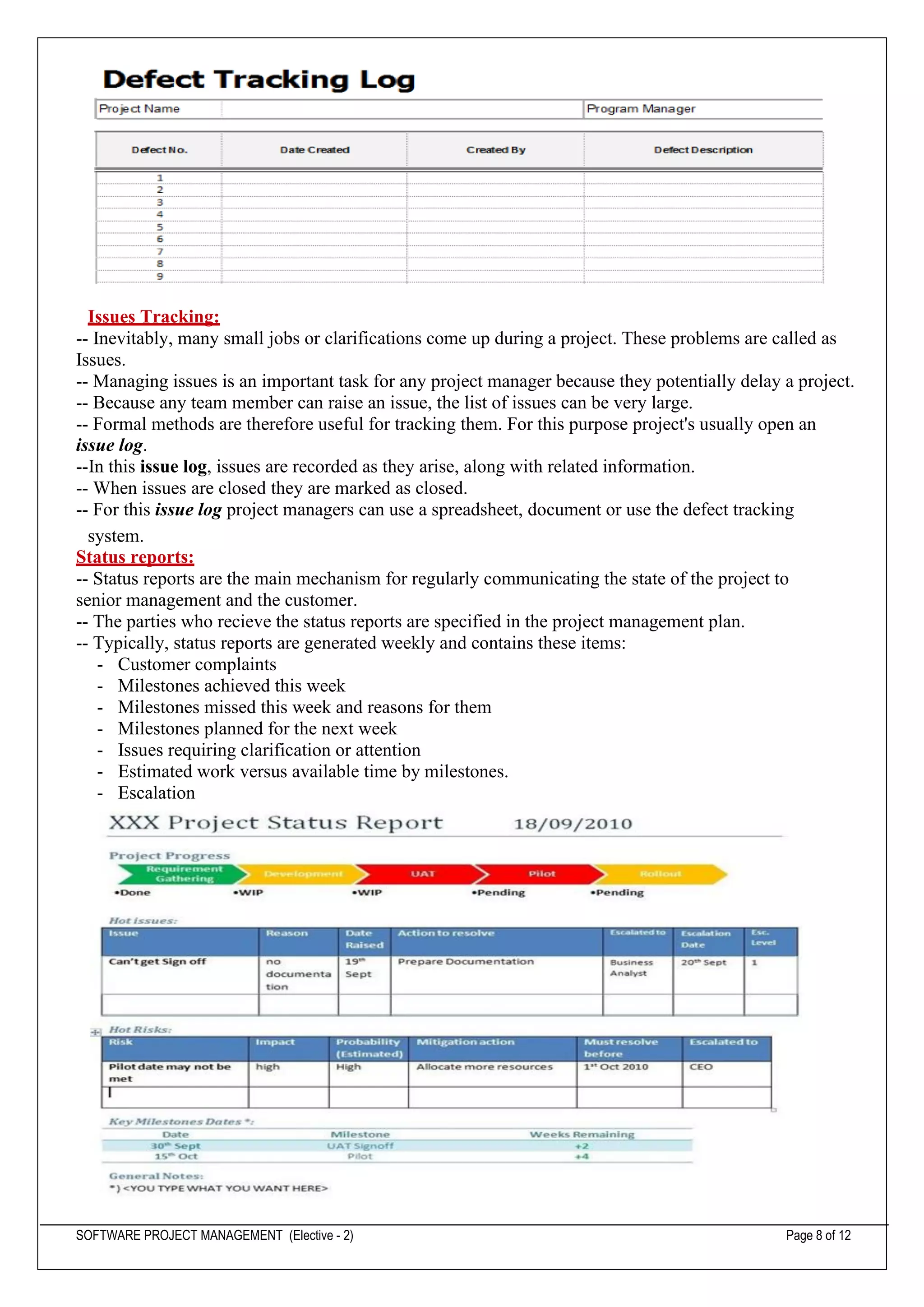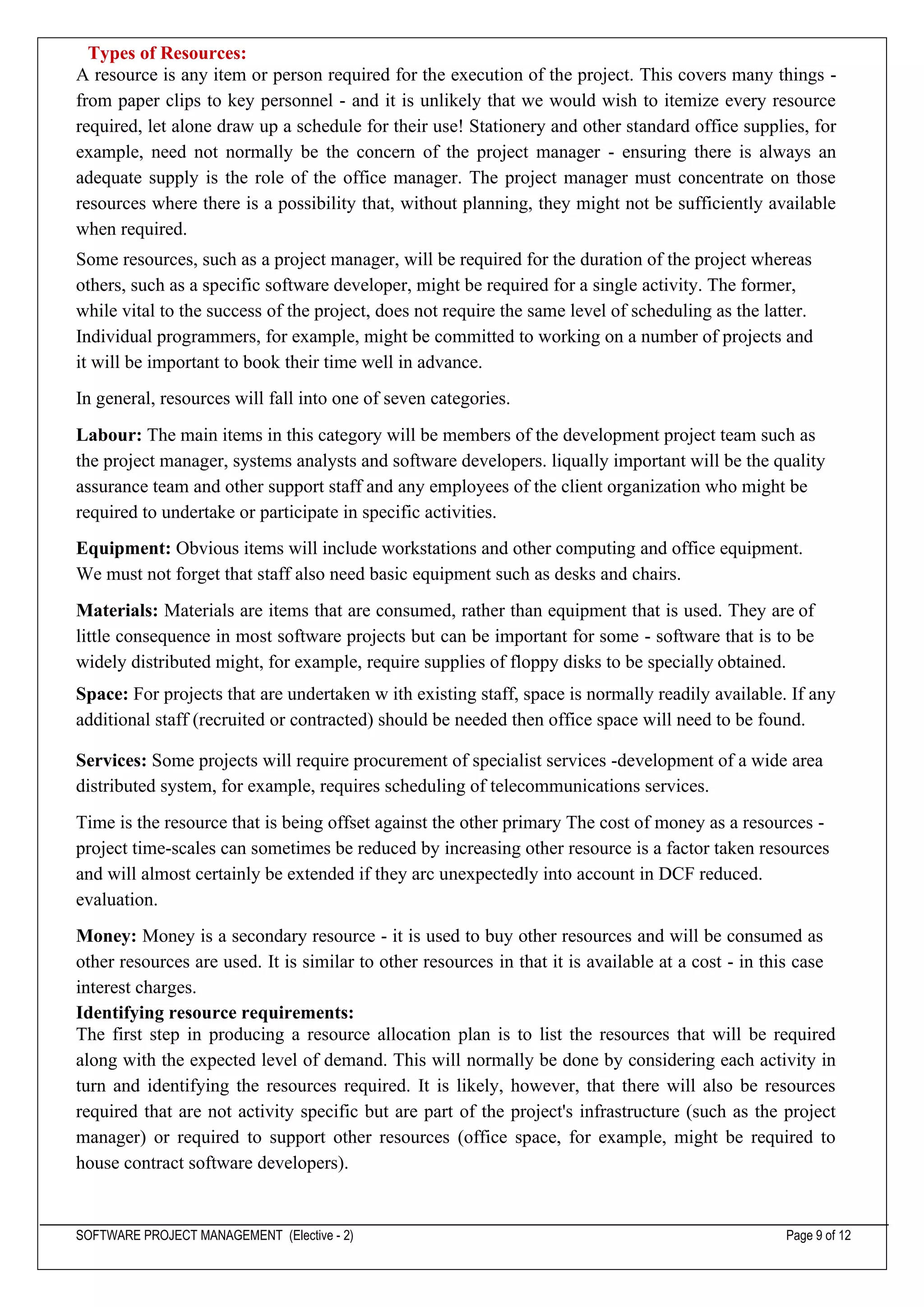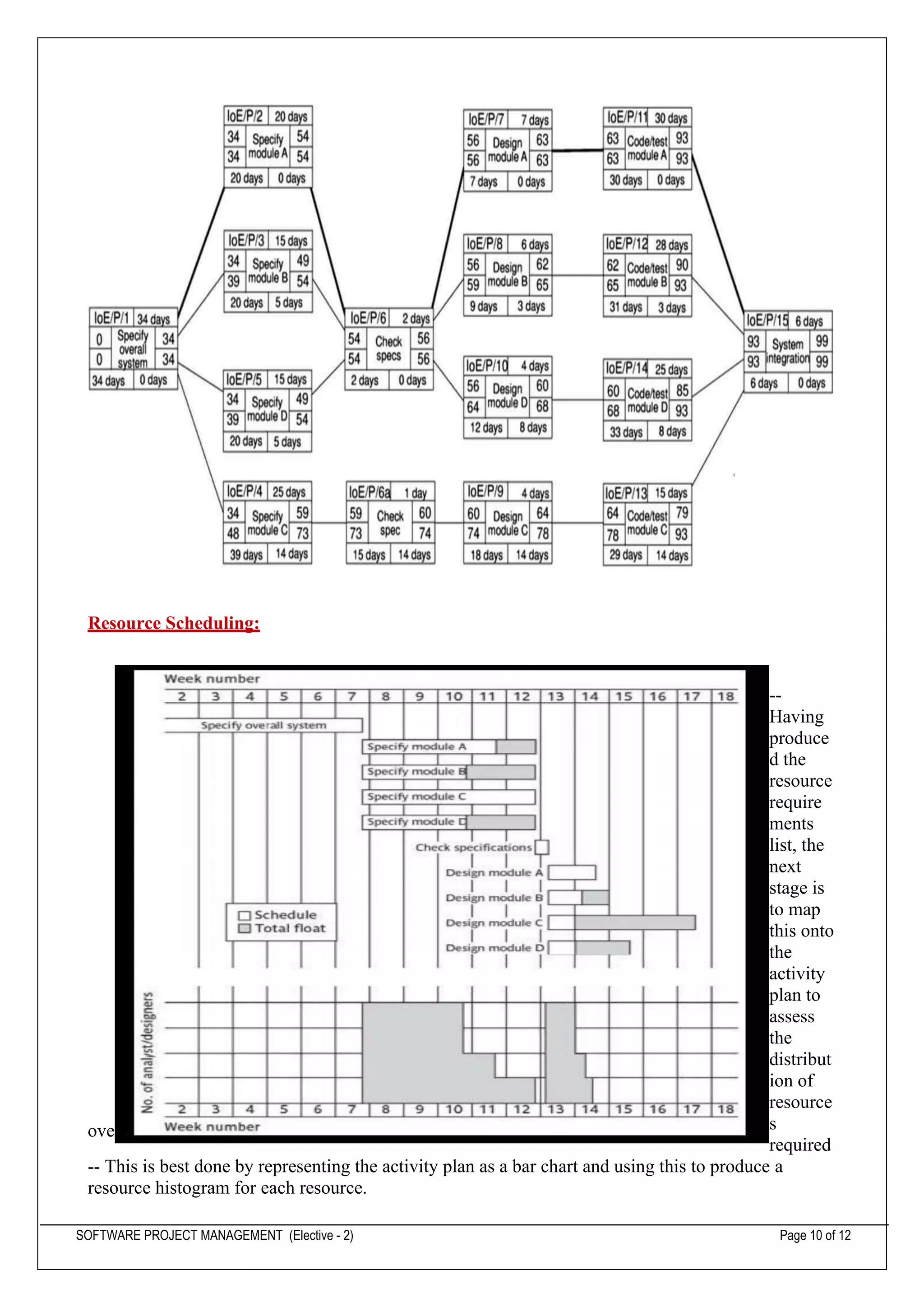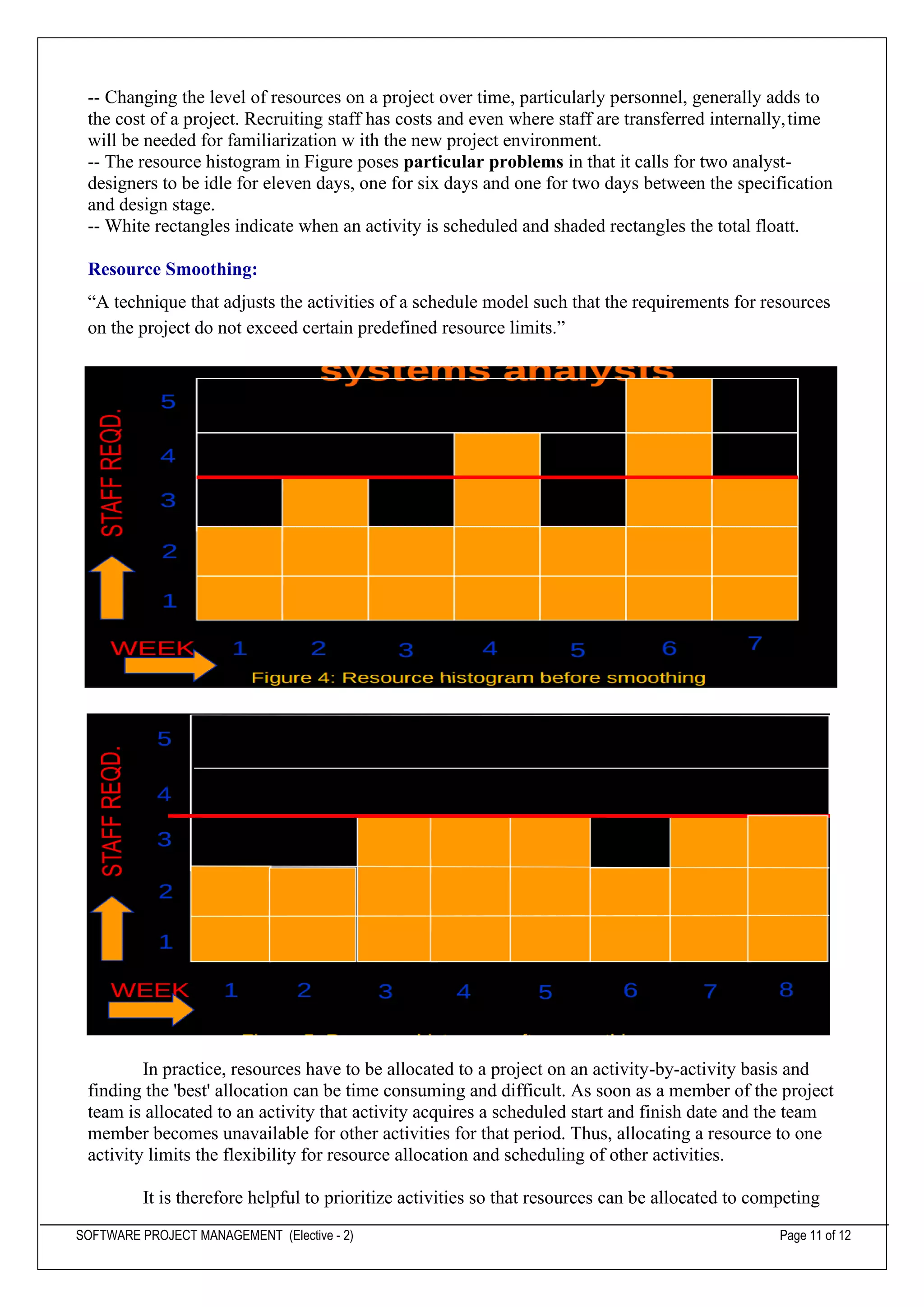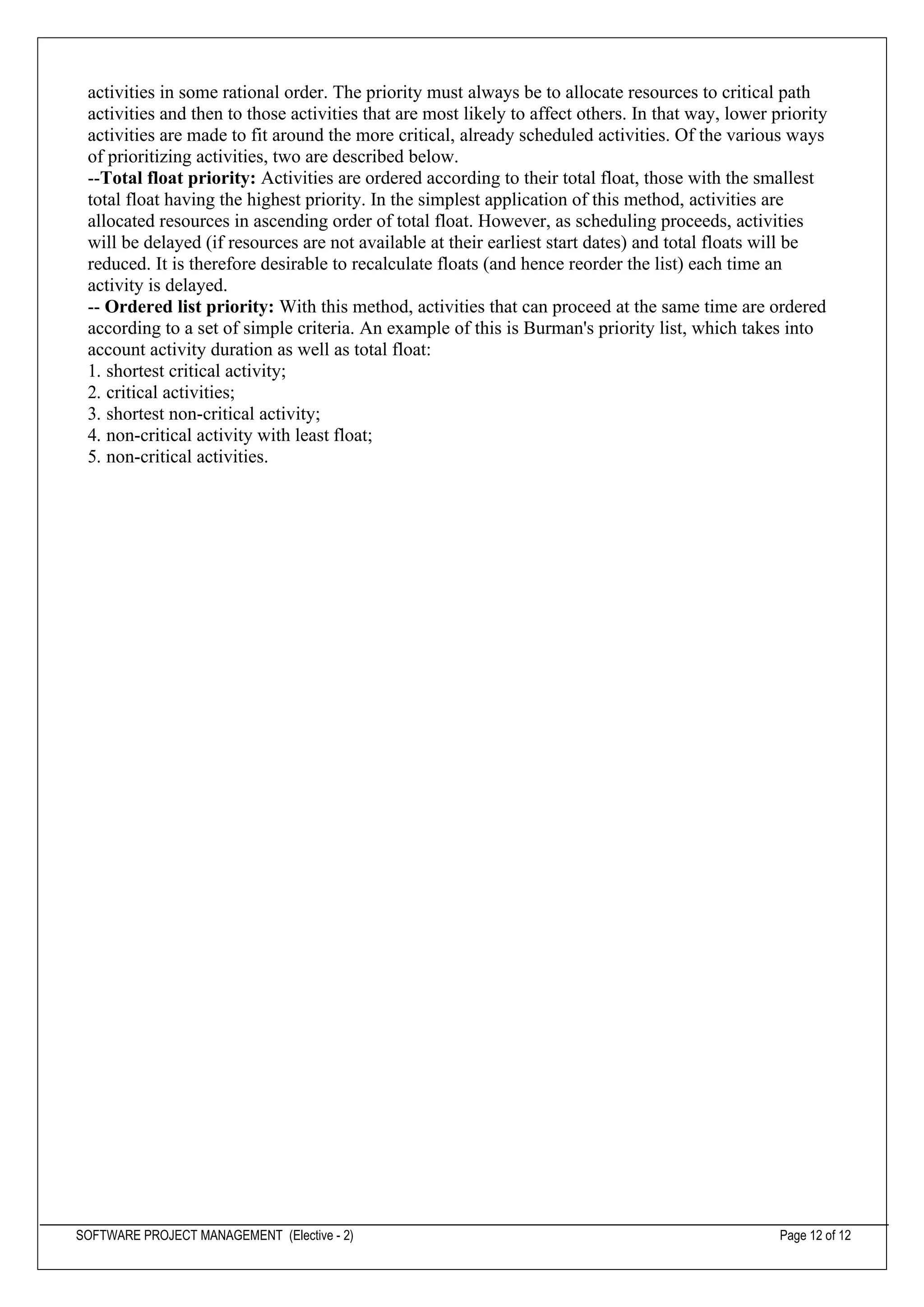The document discusses various methods for monitoring and controlling software projects, including creating frameworks, assessing progress, and reporting. It describes several visual tools to track project schedules and progress, such as Gantt charts, slip charts, and ball charts. These charts represent tasks, timelines, and dependencies to provide snapshots of project status and identify activities that are ahead of or behind schedule so corrective actions can be taken if needed. Regular progress monitoring and reporting against project plans is important for project control.
